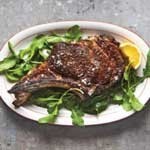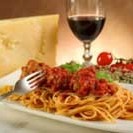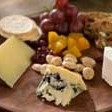PINOT BLANC WINES
The main and significant characteristic of wines made from Pinot Blanc (and Auxerrois) is a certain sweetness of flavor because the acidity is relatively low. Made with the Pinot Blanc grape (also known as Weissburgunder in German), Pinot Biancos from northeast Italy are extremely elegant and offer a tantalizing combination of creamy and crisp, dry and mineral-driven.
When compared to Italy’s most popular white, Pinot Grigio, Pinot Bianco generally has more finesse and is more delicately scented, typically offering apple, pear and hints of white flower. Even though Pinot Bianco and Pinot Grigio from this corner of Italy have lively acidity, Pinot Bianco boasts an alluring, creamy texture almost never found in Pinot Grigio.
In Germany Pinot Blanc is known as Weissburgunder, the vine’s influence in Germany has been increasing. Austria is perhaps the country which values Weissburgunder the highest – particularly around the shallow Neusiedlersee where grapes can ripen to exceptional ripeness and botrytis is almost an annual occurrence. The variety is also grown in Styria where Alois Gross makes an attractively crisp example in Kittenberg and in Lower Austria as well as by some in the vineyards around Vienna. The Austrians also treat their ripest Weissburgunder, often blended with other grape varieties, particularly Chardonnay, to oak aging. Some of Burgenland’s finest Weissburgunders are made around the little town of Gols by the likes of Matthias Beck, Gernot Heinrich and Matthias Leitner. Fine Austrian Weissburgunder can age particularly well.
On export markets the name Pinot Bianco hardly has the cachet of Pinot Grigio but in Collio and Isonzo, Pinot Bianco marketed by the border with Slovenia where it can also produce similarly dazzling wines, it seems particularly at home. Here the grape’s natural body and breadth of flavor combines well with the lively growth that results from the climate and super-clean wine making methods and the wines are much in demand from Italians seeking interesting whites, both oaked and unoaked, from the likes of Mauro Drius, Felluga, Jermann and Schioppetto.
Perhaps the most ambitious Pinot Blanc in the world of wine is made by the intense Sebastiano Castiglioni of Querciabella in Chianti. This estate’s Batàr is modelled on Bâtard Montrachet, no less, and is made from a blend of Pinot Bianco and Chardonnay.
In Slovenia, Croatia and Vojvodina, Pinot Blanc is quite widely grown, as Beli Pinot, and is sometimes treated to barrels, particularly in Slovenia which copies the Friuli habit of blending several grape varieties together in some of its best white wines.
A smattering of Pinot Blanc is grown all over the New World. Some best is grown in British Columbia in western Canada where the naturally high acidity and well-delineated fruit flavors suit this sometimes rather amorphous variety.
The quality bar is higher across the board with Pinot Bianco, which is made in limited quantities compared to Pinot Grigio. Even though producers make several distinct styles of wine, from vibrant and linear to medium-bodied with complexity, Pinot Bianco usually guarantees a decent to high-quality wine. That’s reflected in its generally higher price tag in comparison to cheap, cheerful Pinot Grigio.
The quality bar is higher across the board with Pinot Bianco, which is made in limited quantities compared to Pinot Grigio. Even though producers make several distinct styles of wine, from vibrant and linear to medium-bodied with complexity, Pinot Bianco usually guarantees a decent to high-quality wine. That’s reflected in its generally higher price tag in comparison to cheap, cheerful Pinot Grigio.
Pinot Bianco needs very specific growing conditions to excel, including high hillside vineyards, generally above 450 meters (1,476 feet), where the combination of altitude and fresh breezes generate cool temperatures during the growing season. When compared to Pinot Grigio, for example, Pinot Bianco fares better when it’s exposed to less direct sun and heat. Pinot Bianco also needs complex soils, mainly limestone with some clay. Choosing the best sites has been crucial for improving Pinot Bianco.
Food Pairing and Pinot Blanc
A wine like Pinot Blanc is best suited to foods with more subtle flavoring. It will match up well with light fish, soft cheeses, and salads.
Salads, cold meats and tarte flambée
Pasta in white sauce
Roasted chicken and Turkey
Fried chicken
Fresh fruit salads particularly with tropical fruits
Smoked cheese
Asian stir fries and noodles
Sushi
Shellfish and Fish Caviar
Please sign up for our email list below to get the latest information on our latest product descriptions, upcoming sales and special offers. We have some of the best offers in the business so please keep updated and have all questions answered in our COMMONWEALTH NEWS
Please review some of the fine Pinot Blanc wines below for your next order or go to our main site for a complete selection of all wine and spirits available from around the world.
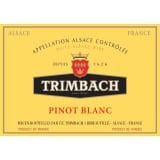 Trimbach Pinot Blanc 2016, Pinot Blanc from Alsace, France
Trimbach Pinot Blanc 2016, Pinot Blanc from Alsace, France
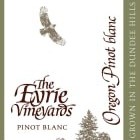
Eyrie Pinot Blanc 2016, Pinot Blanc from Dundee Hills, Willamette Valley, Oregon
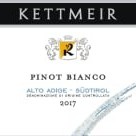 Kettmeir Pinot Bianco 2017, Pinot Blanc from Trentino-Alto Adige, Italy
Kettmeir Pinot Bianco 2017, Pinot Blanc from Trentino-Alto Adige, Italy
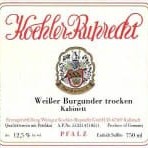 Koehler-Ruprecht Weisser Burgunder Kabinett Trocken 2017, Pinot Blanc from Pfalz, Germany
Koehler-Ruprecht Weisser Burgunder Kabinett Trocken 2017, Pinot Blanc from Pfalz, Germany
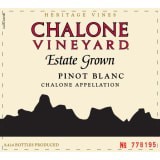 Chalone Estate Pinot Blanc 2014, Pinot Blanc from Chalone, Monterey, Central Coast, California
Chalone Estate Pinot Blanc 2014, Pinot Blanc from Chalone, Monterey, Central Coast, California
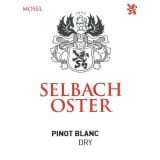 Selbach Oster Pinot Blanc 2016, Pinot Blanc from Mosel, Germany
Selbach Oster Pinot Blanc 2016, Pinot Blanc from Mosel, Germany
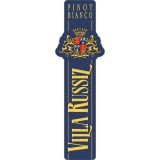 Villa Russiz Pinot Bianco 2015, Pinot Blanc from Collio Goriziano, Friuli-Venezia Giulia, Italy
Villa Russiz Pinot Bianco 2015, Pinot Blanc from Collio Goriziano, Friuli-Venezia Giulia, Italy
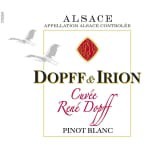 Dopff & Irion Pinot Blanc 2018, Pinot Blanc from Alsace, France
Dopff & Irion Pinot Blanc 2018, Pinot Blanc from Alsace, France
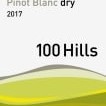 Wittmann 100 Hills Pinot Blanc 2017, Pinot Blanc from Rheinhessen, Germany
Wittmann 100 Hills Pinot Blanc 2017, Pinot Blanc from Rheinhessen, Germany
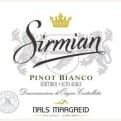
Nals Margreid Sirmian Pinot Bianco 2017, Pinot Blanc from Trentino-Alto Adige, Italy
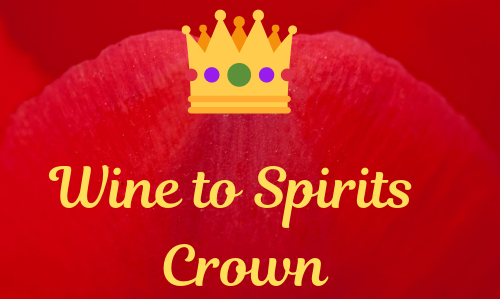
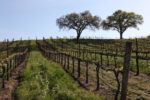
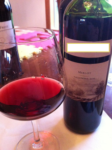

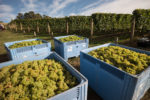
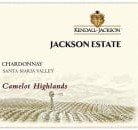 Kendall-Jackson Jackson Estate Camelot Highlands Chardonnay 2016
Kendall-Jackson Jackson Estate Camelot Highlands Chardonnay 2016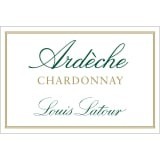 Louis Latour Ardeche Chardonnay 2016
Louis Latour Ardeche Chardonnay 2016 Benjamin Leroux Meursault 2017
Benjamin Leroux Meursault 2017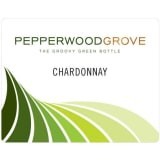 Pepperlwood Grove Chardonnay
Pepperlwood Grove Chardonnay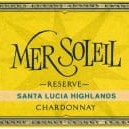 Mer Soleil Santa Lucia Highlands Reserve Chardonnay 2017
Mer Soleil Santa Lucia Highlands Reserve Chardonnay 2017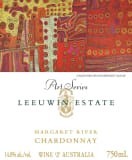 Leeuwin Estate Art Series Chardonnay 2016
Leeuwin Estate Art Series Chardonnay 2016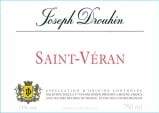 Joseph Drouhin St. Veran 2017
Joseph Drouhin St. Veran 2017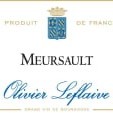
 2007 Alexandre Rochette & cie St. Joseph
2007 Alexandre Rochette & cie St. Joseph 2016 Amon Ra By Ben Glaetzer Barossa Valley Unfiltered Shiaz
2016 Amon Ra By Ben Glaetzer Barossa Valley Unfiltered Shiaz 2007 Andrew Hardy OX Shiraz
2007 Andrew Hardy OX Shiraz Fisher Vineyards Hidden Terrace Vineyard Syrah
Fisher Vineyards Hidden Terrace Vineyard Syrah 2010 Guigal Ermitage Ex Voto
2010 Guigal Ermitage Ex Voto 2012 Haut-Blanville 1955
2012 Haut-Blanville 1955 Jean-Luc Colombo Cornas les Ruchets
Jean-Luc Colombo Cornas les Ruchets 2017 Lancyre Rose
2017 Lancyre Rose 2009 Nicolas Perrin Cornas
2009 Nicolas Perrin Cornas 2004 Planeta Syrah
2004 Planeta Syrah Saracco Moscato d’Asti
Saracco Moscato d’Asti Rivata Moscato d’ Asti
Rivata Moscato d’ Asti Marchese dell’Elsa Moscato d’Asti
Marchese dell’Elsa Moscato d’Asti Mallee Point Moscato
Mallee Point Moscato Castello Poggio Moscato
Castello Poggio Moscato Risata Moscato d’ Asti
Risata Moscato d’ Asti Barefoot Bubbly Pink Moscato
Barefoot Bubbly Pink Moscato Chiarlo Nivole Moscato
Chiarlo Nivole Moscato


